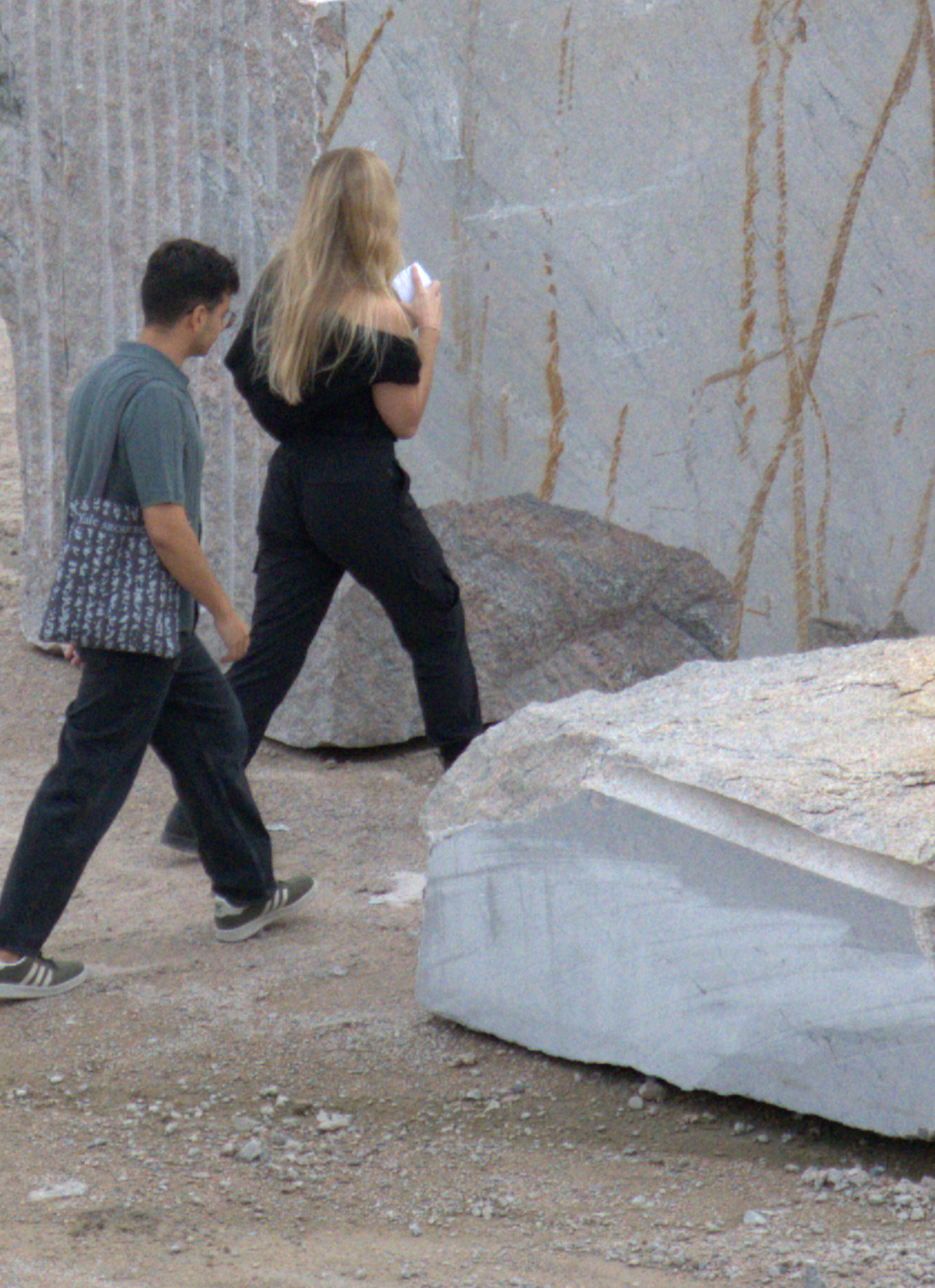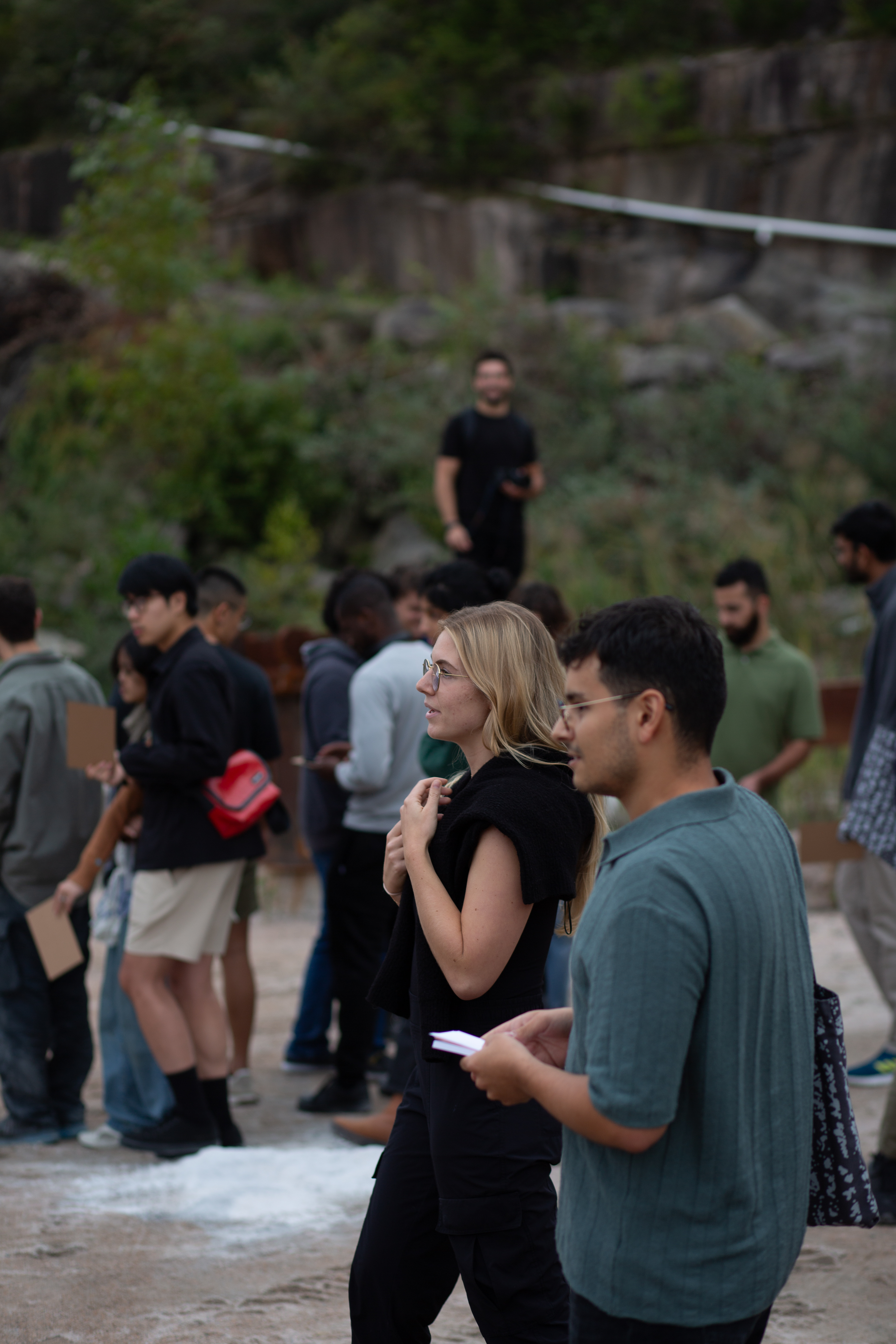On The Ground
Contributors
Reciprocal Landscapes
The provocative landscape of Stony Creek Quarry is the spatial consequence and built inverse of the demand for granite in building and architecture. The subtraction of this landscape has produced addition elsewhere. The geographical breadth of Stony Creek granite ranges from a few feet to thousands of miles— from Connecticut to New York to as far as Germany and Australia. Material specification, once limited to locally available goods, has now become a global exchange. While this global engagement has afforded architects and builders infinite opportunities, there has been a detachment from locality and with it, an ignorance of the origins and consequences of our specifications.
On Friday, October 22, students from the Yale School of Art and the Yale School of Architecture (YSOA) were invited to the quarry as part of issue 2, volume 8 of Paprika!. In a caravan of 11 cars, we passed through the gates of Stony Creek Quarry and into the landscape we had spent the previous semester acquainting ourselves with. With a sense of pride, we shared the special place with our peers and watched as they too were filled with amazement as we passed gravel piles and descended into the active quarry.
From within the active quarry (which would have been inaccessible if it weren’t for the generous gravel bridge constructed by the quarrymen for the event) students were led through a series of engagement exercises. Arranged into a circle, facing outwards to the landscape, all of the students were instructed to, in collaboration with their neighbors, draw a slice of the quarry which would later be stitched together into an unrolled panoramic drawing of the landscape. They drew diligently for the minutes that followed, sketching the contours of the rock, its texture and formations. While still organized into a circle, students then were asked to turn inward where a standard 4’x6’x10’ dimensional block of granite was placed. From the scale of a landscape to the scale of an object, all 43 students then drew the same block—collectively creating a 360-degree catalog. This block was then split, by hand, using traditional quarrying methods. Before their eyes, students watched and listened to each successive blow as a small crack emerged and crept down the face of the stone. For the final exercise, students broke from their elliptical arrangement and disseminated across the quarry floor to make rubbings of the palette of textures around them. These textures have since been used in various media for this issue of Paprika!.
With these exercises we hoped to give students the opportunity not only to see and feel the powerful landscape, but also to prompt deeper reflection on the broader implication of material practice. We hope that they begin to notice the distinct pink hue of Stony Creek granite around the area, and with it, begin a larger practice of noticing, awareness, and appreciation.
Following the event, students were invited to think about reciprocal landscapes in their own lives and called to submit written and visual materials for the issue. Students were encouraged to consider these landscapes broadly—from global supply chains to the Hull’s run they made the previous morning, the backyard they grew up in, or something they saw during travel week and any other architectural, industrial, geological, social, cultural, interpersonal, political, real or imagined landscapes they could ponder.
The immense success of this issue can be attributed to the magical night at the quarry and the quantity of inspiration that was generated there. We are continuously thankful for the generosity and enthusiasm offered to us from Darrell Petit and Tom Cleveland. They served as an endless source of knowledge and encouragement during the studio and have continued to offer their time and resources to those interested in the quarry, including for the Paprika! event.

